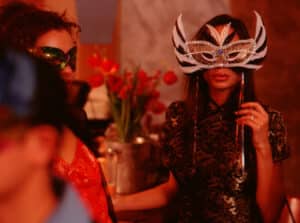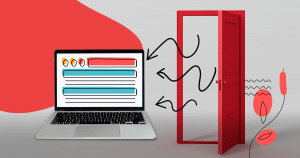The main goal of effective branding is to connect to consumers by creating memorable and lasting impressions. Not only to capture their attention in just seconds, but to keep them wanting to return to your brand.
A powerful way to connect to consumers is through storytelling. Shape your brand by using storytelling to engage your audience, define your brand, and create that deep emotional connection with consumers.
Brand persons, such as archetypes, are the core behind storytelling, which will create a lasting and loyal relationship with your consumers. Proper storytelling through archetypes will make you stand out among your competitors.
Why using archetypes in branding
For a brand to be successful, it needs to convey purpose to its consumers. This can be established through storytelling.
With storytelling, your brand provides a past, builds a future, and represents a clearly defined purpose in the present. Meaning, your brand’s story is going to capture your consumer’s attention with its compelling and personable backstory.
A brand’s story will create returning customers by relating to consumers with a clearly defined brand and drive for the future. And what is an effective and smart way for your brand to nail storytelling? By using archetypes!
Consumers want to feel connected to a brand’s story. It is one thing to tell your brand’s story, it is another to show it.
By incorporating archetypes into your brand, you can not only tell your story to your consumers, but also show them exactly what it is your brand can offer.
Humans have a conscious quest to find happiness. Your brand can fit into their journey to find happiness by using archetypes to connect and guide consumers. Simply put, show that your brand can provide what the consumer is desiring.
It is smart for your brand to create a deeper connection on an emotional and cognitive level. This is how you become a memorable and compelling brand. Think about it, aren’t you more motivated to use a brand that you closely relate to? And one that you never forget?
Your brand can be relatable and unforgettable by providing essential elements of the human experience through symbolism using archetypes.
Have you ever related to a character in a book or movie? The same thing can be done successfully with your brand’s storytelling using archetypes.
Get to know the brand archetypes
There are 12 archetypes to choose from. Your brand should narrow down the choices to 2 or 3 options that align closely with your brand.
Then closely examine the archetypes, from the voice to the colors used, this will help you narrow down your choices to just one primary archetype.

- Innocent: think of brands like Coca-Cola and the Honest Company, which represent optimism and kindness.
- Everyman: think of brands like Ikea and Target, where they offer that feeling of belonging.
- Hero: brands like Nike and the US Army use the Hero, which represents strength and inspiration.
- Caregiver: used by brands like Dove and Allstate, who are caring and honest.
- Explorer: think of brands like Jeep and National Geographic, which offer adventure and freedom.
- Lover: brands like Haagen Daaz and Victoria’s Secret use the Lover archetype, representing luxury and sensuality.
- Rebel: think of brands like MTV and Harley Davidson, who are radically different and have a passion to take risks.
- Creation: used by brands like Lego and Crayola, geared towards inspiration and imagination.
- Ruler: brands like British Airways and Mercedes Benz represent that Ruler, who are powerful and influential.
- Magician: think of brands like Apple and Disney, who inspire magic and dreams.
- Sage: used by brands like Harvard and the Mayo Clinic, representing wellness and wisdom.
- Jester: think of brands like Southwest and Ben & Jerrys, who are spontaneous and offer comedic relief.

5 ways Archetypes help you nail branding
1. Employes Effective Storytelling Based on Science
The root of communication is storytelling. This is where the science behind using archetypes comes in.
It dates back to extensive research done by Carl Jung in the early 1900s. Jung defines archetypes as universal symbolism that are unconsciously and innately understandable by humans.
These universal themes or characters are surprisingly all around us. From literature to television, and even branding!
Humans have basic desires such as wanting to feel powerful or yearn for freedom. Archetypes can relate to these desires, making your brand feel more relatable.
Archetypes are used to connect on a deep and cognitive level. After all, reliving these desires and narratives offer proper pleasure, as Aristotle once said. (Woodside, Sood, & Miller 2008)
2. It Creates a Clear, Not Confused Brand
Applying archetypes help your brand, answer the ever so critical question, “what is on brand?”.
Meaning, your brand needs to be defined. Consumers should know exactly what your brand is and what it represents. Consumers should never be confused by your brand.
Seek a primary archetype and possibly a secondary one. Stick to that archetype and keep your brand inline with it at all times.
If you are confused about how to represent your brand, then most likely your consumers will end up just as confused. And you never want to be a confused brand.
We are living in a fast-paced world and only have just a few seconds to capture the attention of consumers. A clear and concise brand starts with a defined branding archetype. Maintain that clarity by attaching your brand to an archetype.
3. Stay Consistent and Congruent Over Time
A consistent message defines a brand. It also helps attract customers and retain them. Your brand should always strive to be in the back of your consumers’ mind.
This will allow consumers to think about your brand when they want to pursue a certain desire (this is where the use of consistent archetypes comes in).
With consistent and constant, intentional, and powerful communication.
4. Attract Your Ideal Client
The archetype you choose for your brand should be aligned with your ideal client in mind at all times. After all, you are trying to shape how that ideal client sees your brand.
To do this you’ll want to have some clear personas defined for your ideal client and then think about what sort of messaging is most likely to resonate with them.
Focus on the values and characteristics that you are in alignment with, to point #3 above, and make sure to stay consistent with your messaging as it will take multiple impressions for it to stick in their memory.
If you have more than one persona you are targeting make sure your brand covers them all as best as you can. Do not start adding more archetypes into your brand to make them all fit together, or you will create a confused brand (see #2 above).
5. Save Time and Money
At the end of the day, everything comes down to either time and/or money for any brand owner, and guess what, archetypes help here too.
Here are just a few ways:
- You’ll spend far less time thinking about what to say and how to say it and instead focus that time and energy on the important action item instead.
- Working with other vendors who act on behalf of your brand will be more efficient, with higher quality outcomes, when you have a clear brand you can convey to them.
- Training new team members and acclimating them to your brand becomes a breeze too.
About the author
Are you a new or growing company looking for a strategic rebrand? Ivio Agency’s Better Branding Workshop is based on these 12 storytelling archetypes and they can take your brand to the next level with their extraordinary team of designers, marketers, and brand strategists.







